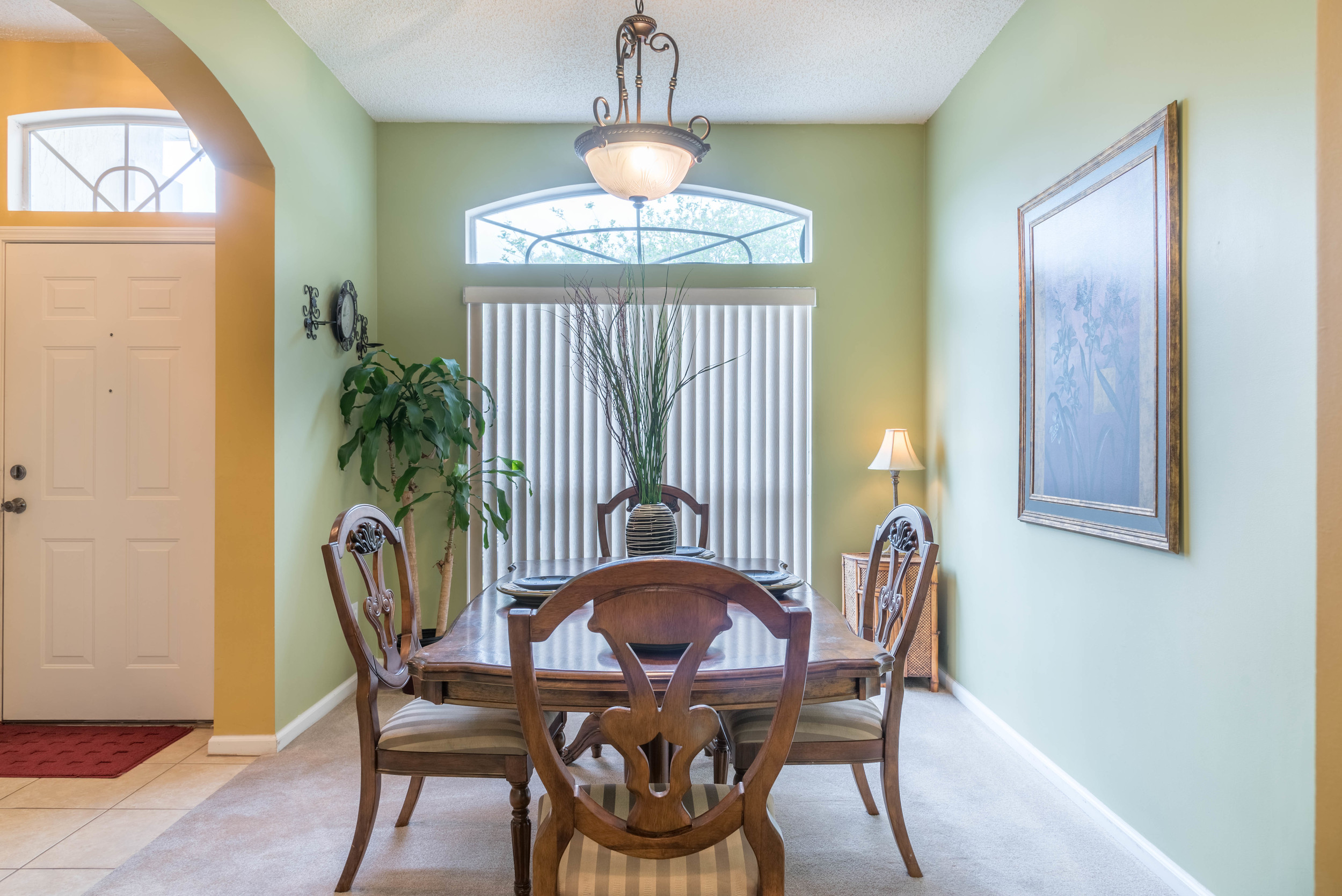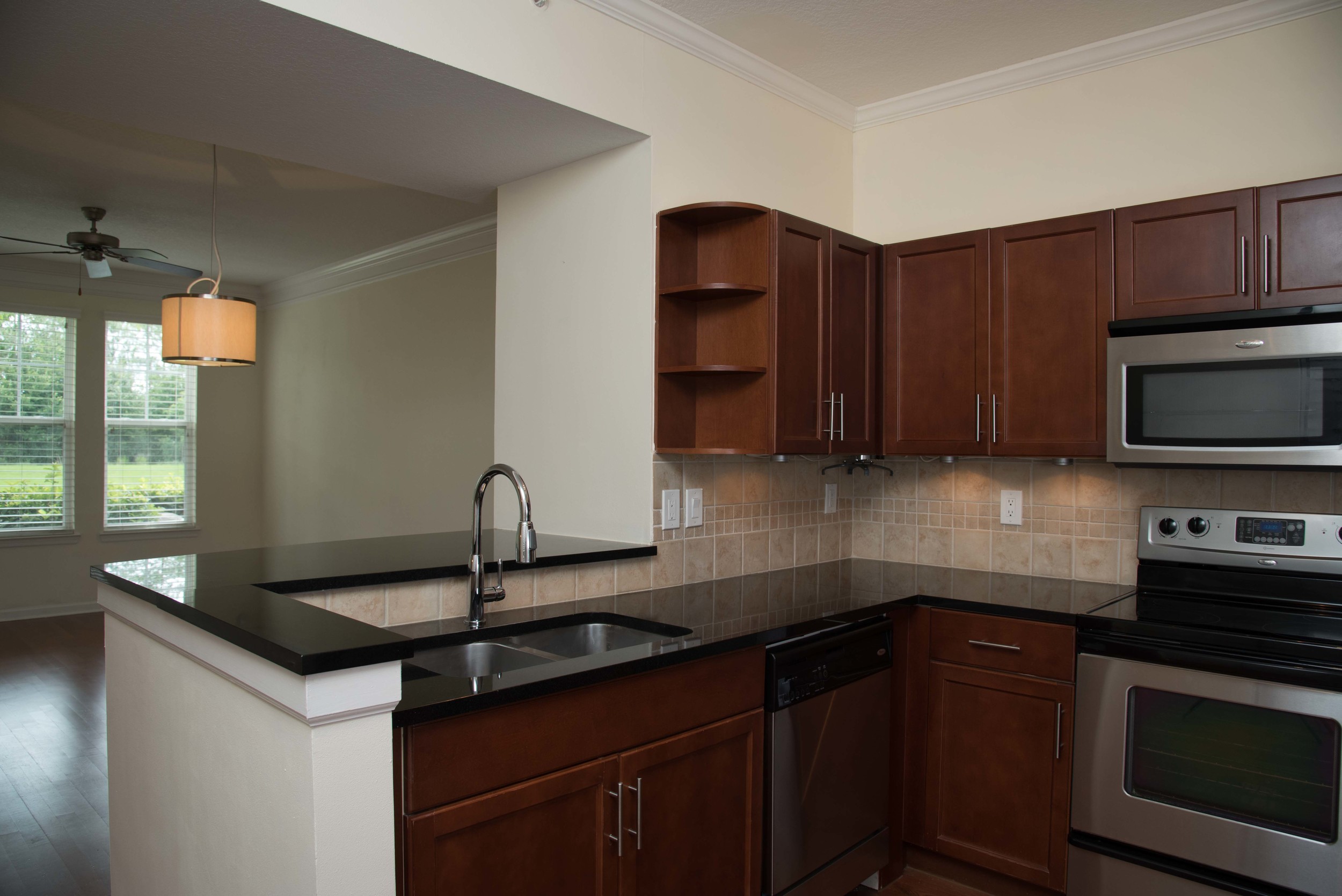There are two common approaches to taking interior photos, HDR and Flash. Let's talk a little about each one.
HDR
HDR stands for High Dynamic Range. Dynamic range is a pretty complex concept, but to put it simply:
Dynamic range is the difference between the lightest light and darkest dark which can be seen in a photo. Once your subject exceeds the camera's dynamic range, the highlights wash out to white, or the darks become black blobs.
So basically the goal with HDR is to bring back detail in the highlights (sunlight coming in from windows) and also in the shadows (dark corners, under cabinets etc.)
Typically with an HDR photo, the camera will take multiple images with different exposure values; one overexposed, one underexposed, and one properly exposed, then you combine them together to create an "HDR" image. From the overexposed image it will bring in detail from the shadows, and from the underexposed image it will bring in detail in the highlights.
Here's the same picture from above after combining it with multiple exposures.
HDR gets a bad rap by many photographers, it can look unrealistic or cartoonish if done incorrectly, here's an example of bad, tonemapped HDR.
I never use tonemapped HDR in any of my photography, instead I use what's called "Exposure Fusion" but we're not going to get into the difference between the two today.
Color Temperature
The biggest issue that arises with HDR, is when you have a mixture of different color temperatures. Sometimes you'll have daylight coming in through the windows, incandescent light from light fixtures, overhead fluorescent lights, and balancing them all out can be difficult.
Check out these images below, in the first one, the kitchen has proper white balance, but the living room has a blue tint from the sunlight coming in through the windows. In the second image, the living room is correct but the kitchen is way too warm.
But with a little bit of skill with the brush tool, you can paint in the correct temperature to get a balanced image
Flash
Using off-camera flash is the preferred method of many Real Estate photographers, but it's usually more time consuming on-location.
Although it usually takes more time to set up flashes and get a good image in camera, post processing for flash photography is almost always faster than processing an HDR image.
When using flash, the objective is to match the light inside of the room with the light coming in from the windows, so you get a nice bright interior and a clear view outside.
One of the challenges that comes with using flash is lighting the entire scene. Take the image below for example, the kitchen is properly lit with a flash off to camera-right, but the living room is too dark.
To fix this issue, you can use another flash in the living room and fire both flashes at the same time, or if you only own one flash, move the flash and take a second picture and combine the two in Photoshop.
Here's the second photo with the flash only firing in the living room.
And here's the two flashes combined.
Well hopefully you've learned a little about the difference between HDR and Flash photography, if you have any questions, or you are an agent in Jacksonville Fl looking to book a shoot, call or email me at (904) 302-3724 and Mike.Liddell.Photography@gmail.com
Thanks for reading!











